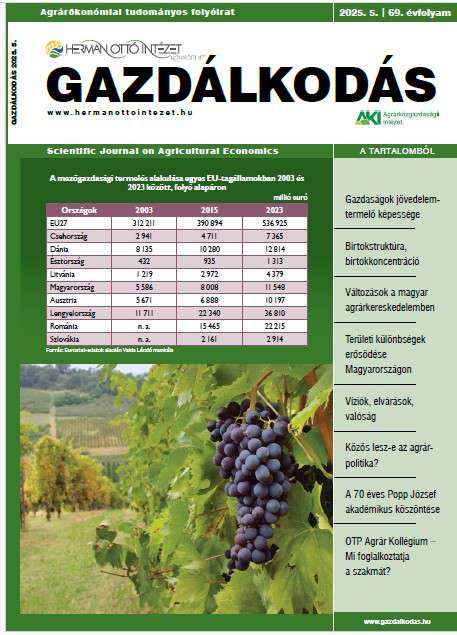Archive » 2025 » 2025. 05. » KÁPOSZTA, JÓZSEF – LŐRINC, BALÁZS: INCREASING TERRITORIAL DISPARITIES IN THE DOMESTIC SPATIAL ECONOMIC SYSTEM

INCREASING TERRITORIAL DISPARITIES IN THE DOMESTIC SPATIAL ECONOMIC SYSTEM
KÁPOSZTA, JÓZSEF – LŐRINC, BALÁZS
Keywords: Keywords: social inequality, periphery, urbanity/ruralism, low prestige JEL code: R10, R11, R14
Teljes cikk
vAnalysing the widening of regional disparities is a key issue in the domestic spatial economic system, as economic development is not evenly distributed across regions, and regional disparities generate a number of social and economic challenges. The increasing spatial disparities in Hungary in recent decades, especially between the capital and rural areas, highlight the complexity of spatial economic systems and the interaction of local and global factors. A comprehensive analysis of these phenomena can help to understand how centre-periphery trends affect the development of local economies and the role of cohesion policy in mitigating the effects of territorial disparities. An examination of the links between economic development and spatiality is essential to understanding the widening of territorial disparities. The different territorial units, differentiated by their economic activities, demographic characteristics and infrastructure, show different development trajectories, which have so far been analysed most often in the context of economic and political factors. Nowadays, in the context of technological innovation and sustainable development, it is important to integrate not only economic indicators but also aspects of social cohesion and environmental sustainability into spatial economic analyses. Taking these factors into account reflects a deeper understanding of the spatial economy, which is essential to reduce disparities between rural and urban areas. In our study, we try to point out the links between the domestic district system and the processes of spatial economic transformation that are indicative of the emergence and unfortunate increase in spatial disparities. DOI: https://doi.org/10.53079/GAZDALKODAS.69.5.t.pp_411-420
